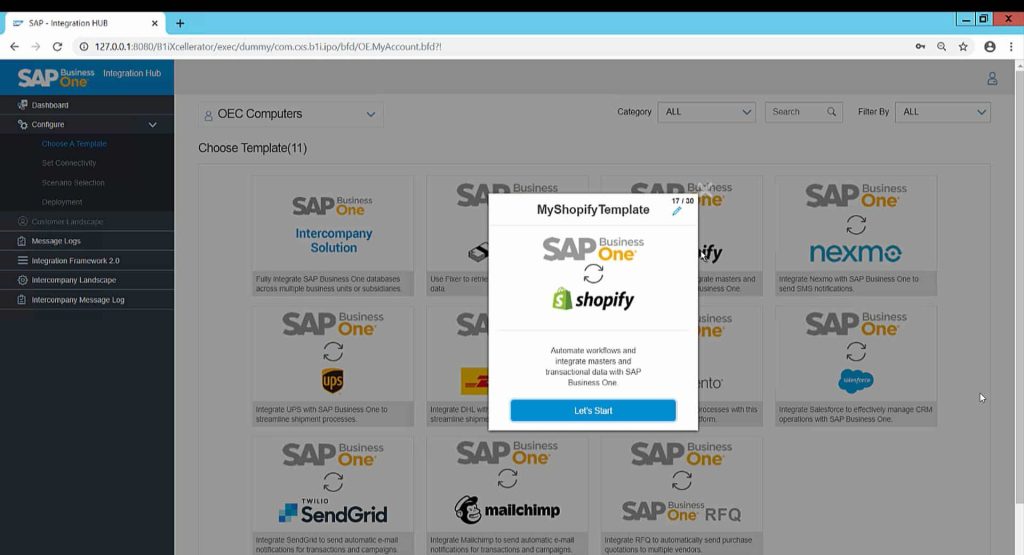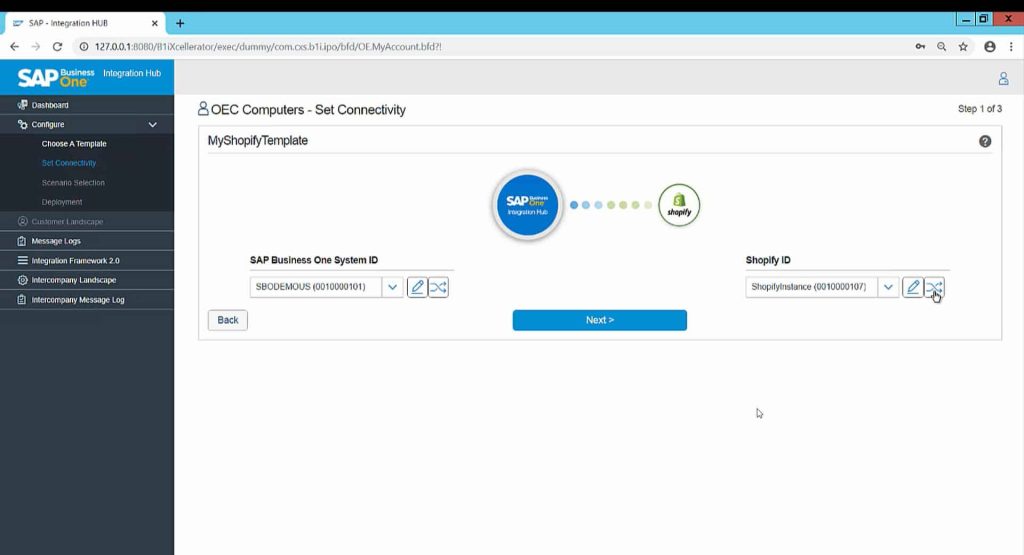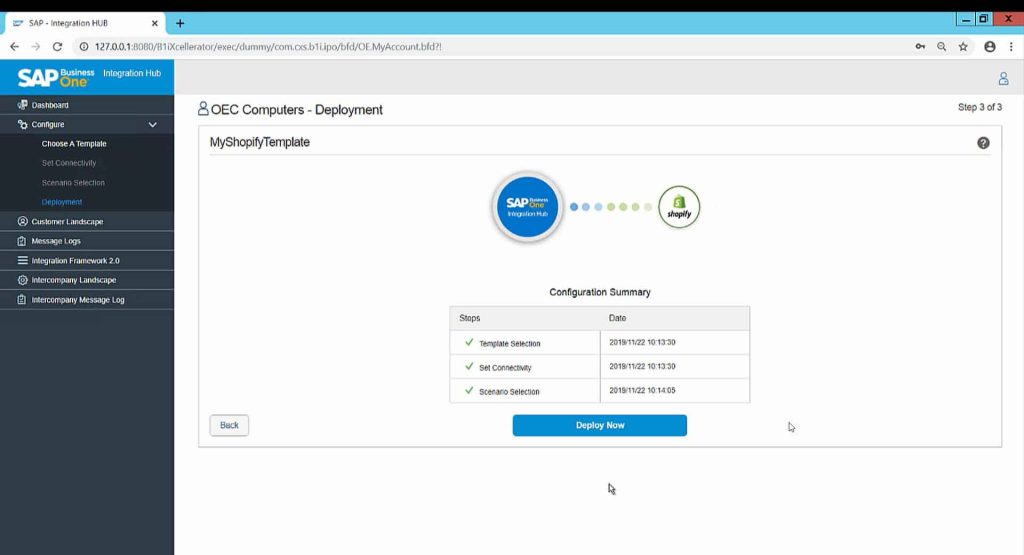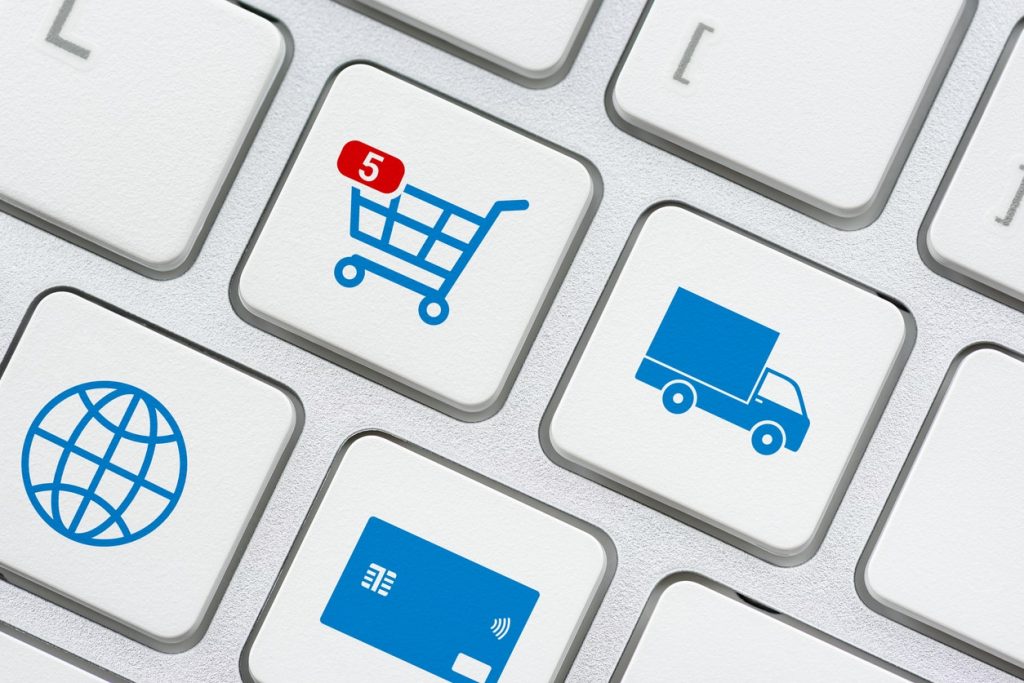Integrate Shopify into SAP Business One to reduce human error and streamline eCommerce
SAP Business One is an excellent solution for managing complex enterprise assets. Shopify is one of the simplest, most user-friendly e-commerce solutions on the market. Integrating these two tools offers organisations a chance to enjoy the best of both worlds.
Both SAP and Shopify focus on simplifying the user experience. Seamless communication between these two tools ensures fast, reliable data transfer between customers, storefronts, warehouse operators, and shipping vendors. SAP’s ability to handle automatic order updates makes it a powerful asset for growing eCommerce companies that rely on Shopify. Businesses that increase order efficiency and communicate effectively with customers are better positioned to meet customer needs and earn rave reviews with each product sold.
1) Open SAP’s Configure Menu, Create a Template
From the SAP dashboard, open the Configure menu. Click on Create a Template. The next screen will show system resource usage data. You can also find document and memory usage data for your SAP instance here.

2) Select Shopify in the Template Screen
The template list includes every native API that SAP offers integration support for. Scroll to the Shopify logo and click. The default name for your template will be “MyShopifyTemplate.” You can change it at any time after configuring the template.

3) Connect Using the Set Connectivity Configuration Page
After you set the template name, you will have to introduce your user login credentials. Begin with your SAP Business One System ID and then test the connection. Next, input your Shopify credentials and test the connection again. Once the system reports success for both connections, you are ready to deploy the Shopify API for SAP.

4) Begin Deployment
The Deploy Now button should now appear. Click on this button to begin the deployment process. SAP will launch a pop-up window telling you whether the deployment was a success. Upon successful deployment, the Shopify logo will feature a green chain in the Template menu. You will also see the Shopify database script execute the next time you sign in to SAP. The system may require you to restart your SAP instance afterwards.

For more detailed step by step instructions, click here to watch the tutorial video.
Shopify API Features in SAP

Shopify allows its users to take advantage of SAP’s diverse database structure to store and process information dynamically. This makes it possible for store owners to constantly update their user information and maintain organisation-wide data synchronisation automatically.
Shopify’s SAP API also makes it easier to add new products to the store’s front end. You no longer have to go back and forth between your ERP solution and your store. Adding a new product to Shopify’s front end will immediately trigger a change in SAP’s inventory database. This functionality can also go the opposite way – you can update your inventories through SAP.
Payment processing is simplified with the two programs working together. SAP will automatically process payments made through Shopify and add the relevant data to its accounting ledgers in real-time. Merchants can check for successful payment quickly and easily. Managing eCommerce data through a Shopify storefront is now easier than ever before.
For more information, get in touch with the SMB Solutions team today.

